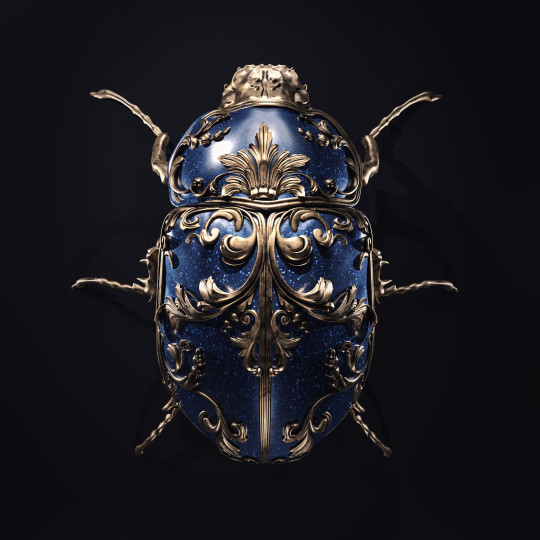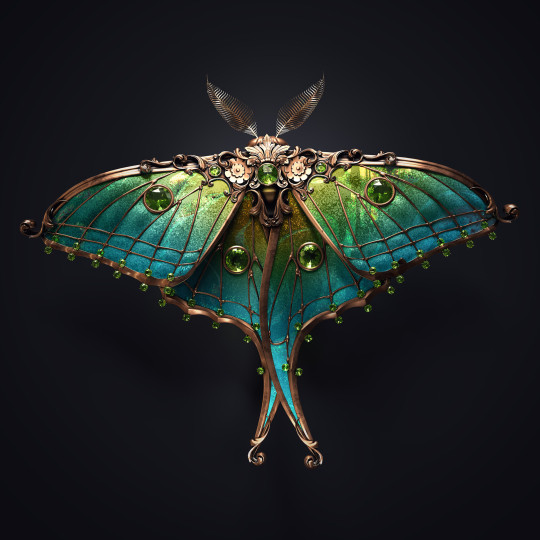whorus69
261 posts
Don't wanna be here? Send us removal request.
Text
GEDI scientists share space laser excitement
Greenbelt MD (SPX) Dec 03, 2018 A new NASA laser instrument set to launch to the International Space Station in December will help scientists create the first three-dimensional map of the world’s temperate and tropical forests. The Global Ecosystem Dynamics Investigation, or GEDI, is scheduled to launch on SpaceX’s Falcon 9 rocket. From the station, GEDI’s advanced laser technology will reveal the three-dimensional struc Full article
10 notes
·
View notes
Photo

“ Cleopatre “ Portraits de femmes libres - Editions Fleurus 2018
21K notes
·
View notes
Photo

“Moana and the Ocean” , écrit par Heather Knowles Disney 2016
3K notes
·
View notes
Photo









Quelques recherches pour un projet BD sur un astronaute solitaire 🚀🌏⭐
Et merci pour les 5k !!!⭐🌟✨💫
515 notes
·
View notes
Text
Blowing Bubbles in the Gamma-ray Sky
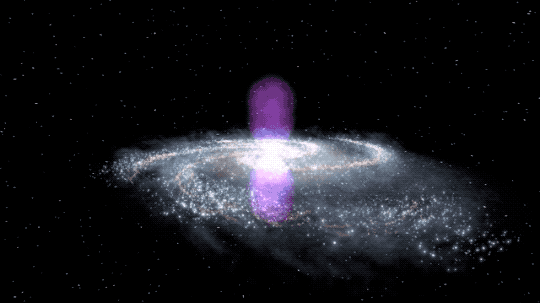
Did you know our Milky Way galaxy is blowing bubbles? Two of them, each 25,000 light-years tall! They extend above and below the disk of the galaxy, like the two halves of an hourglass. We can’t see them with our own eyes because they’re only apparent in gamma-ray light, the highest-energy light in the universe.

We didn’t even know these humongous structures were smack in the middle of our galaxy until 2010. Scientists found them when they analyzed the first two years of data from NASA’s Fermi Gamma-ray Space Telescope. They dubbed them the “Fermi bubbles” and found that in addition to being really big and spread out, they seem to have well-defined edges. The bubbles’ shape and the light they give off led scientists to think they were created by a rapid release of energy. But by what? And when?
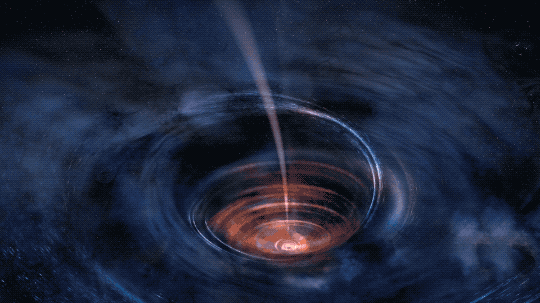
One possible explanation is that they could be leftovers from the last big meal eaten by the supermassive black hole at the center of our galaxy. This monster is more than 4 million times the mass of our own Sun. Scientists think it may have slurped up a big cloud of hydrogen between 6 and 9 million years ago and then burped jets of hot gas that we see in gamma rays and X-rays.

Another possible explanation is that the bubbles could be the remains of star formation. There are massive clusters of stars at very the center of the Milky Way — sometimes the stars are so closely packed they’re a million times more dense than in the outer suburb of the galaxy where we live. If there was a burst of star formation in this area a few million years ago, it could have created the surge of gas needed to in turn create the Fermi bubbles.
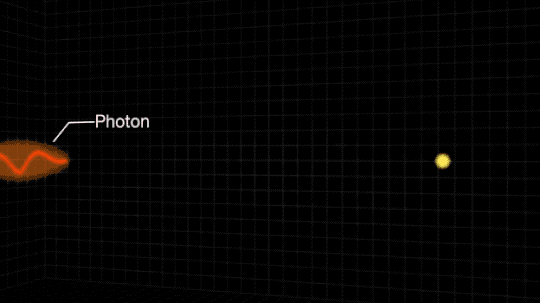
It took us until 2010 to see these Fermi bubbles because the sky is filled with a fog of other gamma rays that can obscure our view. This fog is created when particles moving near light speed bump into gas, dust, and light in the Milky Way. These collisions produce gamma rays, and scientists had to factor out the fog to unveil the bubbles.

Scientists continue to study the possible causes of these massive bubbles using the 10 years of data Fermi has collected so far. Fermi has also made many other exciting discoveries — like the the collision of superdense neutron stars and the nature of space-time. Learn more about Fermi and how we’ve been celebrating its first decade in space.
Make sure to follow us on Tumblr for your regular dose of space: http://nasa.tumblr.com
2K notes
·
View notes
Text
The Kepler space telescope has shown us our galaxy is teeming with planets — and other surprises

The Kepler space telescope has taught us there are so many planets out there, they outnumber even the stars. Here is a sample of these wondrous, weird and unexpected worlds (and other spectacular objects in space) that Kepler has spotted with its “eye” opened to the heavens.
Kepler has found that double sunsets really do exist.

Yes, Star Wars fans, the double sunset on Tatooine could really exist. Kepler discovered the first known planet around a double-star system, though Kepler-16b is probably a gas giant without a solid surface.
Kepler has gotten us closer to finding planets like Earth.
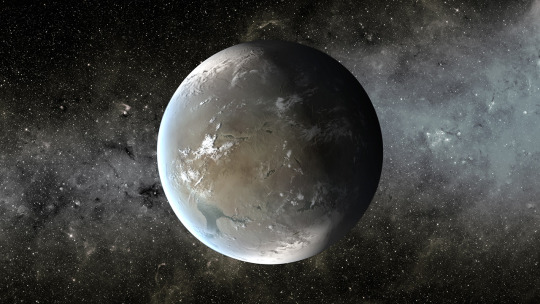
Nope. Kepler hasn’t found Earth 2.0, and that wasn’t the job it set out to do. But in its survey of hundreds of thousands of stars, Kepler found planets near in size to Earth orbiting at a distance where liquid water could pool on the surface. One of them, Kepler-62f, is about 40 percent bigger than Earth and is likely rocky. Is there life on any of them? We still have a lot more to learn.
This sizzling world is so hot iron would melt!

One of Kepler’s early discoveries was the small, scorched world of Kepler-10b. With a year that lasts less than an Earth day and density high enough to imply it’s probably made of iron and rock, this “lava world” gave us the first solid evidence of a rocky planet outside our solar system.
If it’s not an alien megastructure, what is this oddly fluctuating star?

When Kepler detected the oddly fluctuating light from “Tabby’s Star,” the internet lit up with speculation of an alien megastructure. Astronomers have concluded it’s probably an orbiting dust cloud.
Kepler caught this dead star cannibalizing its planet.
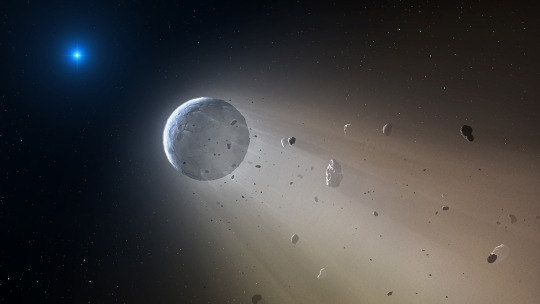
What happens when a solar system dies? Kepler discovered a white dwarf, the compact corpse of a star in the process of vaporizing a planet.
These Kepler planets are more than twice the age of our Sun!
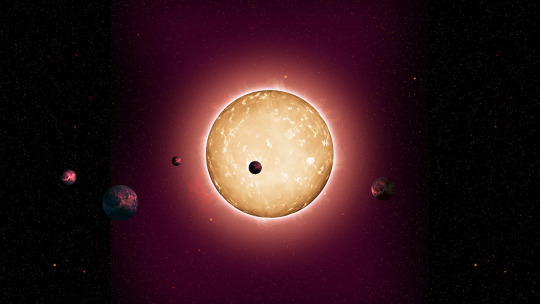
The five small planets in Kepler-444 were born 11 billion years ago when our galaxy was in its youth. Imagine what these ancient planets look like after all that time?
Kepler found a supernova exploding at breakneck speed.
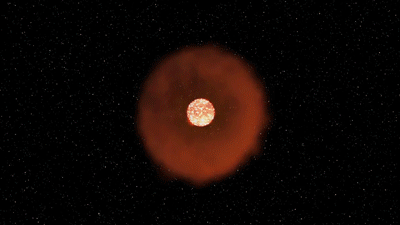
This premier planet hunter has also been watching stars explode. Kepler recorded a sped-up version of a supernova called a “fast-evolving luminescent transit” that reached its peak brightness at breakneck speed. It was caused by a star spewing out a dense shell of gas that lit up when hit with the shockwave from the blast.
* All images are artist illustrations.
Make sure to follow us on Tumblr for your regular dose of space: http://nasa.tumblr.com
16K notes
·
View notes
Text
How Airglow Can Help Us Understand the Sun’s Influence on Earth
You may have seen the famous blue marble or pale blue dot images showing Earth from 18,000 and 3.7 billion miles away, respectively. But closer to home — some 300 miles above Earth’s surface — you might encounter an unfamiliar sight: vibrant swaths of red and green or purple and yellow light emanating from the upper atmosphere.
This light is airglow.

Airglow is created when atoms and molecules in the upper atmosphere, excited by sunlight, emit light to shed excess energy. Or, it can happen when atoms and molecules that have been ionized by sunlight collide with and capture a free electron. In both cases, these atmospheric particles emit light in order to relax again. The process is similar to how auroras are created, but while auroras are driven by high-energy solar wind, airglow is energized by day-to-day solar radiation.

Since sunlight is constant, airglow constantly shines throughout Earth’s atmosphere, and the result is a tenuous bubble of light that closely encases our planet. Its light is too dim to see easily except in orbit or on the ground with clear, dark skies and a sensitive camera — it’s one-tenth as bright as the light given off by all the stars in the night sky.

Airglow highlights a key part of our atmosphere: the ionosphere. Stretching from roughly 50 to 400 miles above Earth’s surface, the ionosphere is an electrified layer of the upper atmosphere generated by extreme ultraviolet radiation from the Sun. It reacts to both terrestrial weather below and solar energy streaming in from above, forming a complex space weather system. Turbulence in this ever-changing sea of charged particles can manifest as disruptions that interfere with Earth-orbiting satellites or communication and navigation signals.

Understanding the ionosphere’s extreme variability is tricky because it requires untangling interactions between the different factors at play — interactions of which we don’t have a clear picture. That’s where airglow comes in. Each atmospheric gas has its own favored airglow color, hangs out at a different height and creates airglow by a different process, so we can use airglow to study different layers of the atmosphere.

Airglow carries information on the upper atmosphere’s temperature, density, and composition, but it also helps us trace how particles move through the region itself. Vast, high-altitude winds sweep through the ionosphere, pushing its contents around the globe — and airglow’s subtle dance follows their lead, highlighting global patterns.

Two NASA missions take advantage of precisely this effect to study the upper atmosphere: ICON — short for Ionospheric Connection Explorer — and GOLD — Global-scale Observations of the Limb and Disk.
ICON focuses on how charged and neutral gases in the upper atmosphere behave and interact, while GOLD observes what drives change — the Sun, Earth’s magnetic field or the lower atmosphere — in the region.

By imaging airglow, the two missions will enable scientists to tease out how space and Earth’s weather intersect, dictating the region’s complex behavior.
Keep up with the latest in NASA’s airglow and upper atmosphere research on Twitter and Facebook or at nasa.gov/sunearth.
Make sure to follow us on Tumblr for your regular dose of space: http://nasa.tumblr.com.
1K notes
·
View notes
Text
دراما
التدقيق في تحويل الأفكار الغير مرتبة الي كلمات واضحة قد تكون عائدة بالضرر علي من خلال تحديد الأشياء في قالب محدد, بمعني انني اشعر بالتحجيم عند كتابتي او تفوهي بالكلام ف الظاهر هذا هو انت ولكن ما اريد ان اقوله او اشارك به له الكثير من الابعاد والزوايا, ولا أعتقد أن الكلمات دائما تكون منصفة خصوصا عند التفوه ب أفكار متداخلة عن الحياة في المجتمع البشري بالأخص والوجود في العموم, أشعر بالخوف من حصر نفسي في كلمات أو موقف بعينه, انا مائع شكلا وموضوعا ولم يعد لي انتماء لأي فصيل بشكل واضح, ف أنتمي لثقافة البيئة المحيطة واشياء حقا لا أومن بها في المجتمعات البشرية لكن استخدمها فقط لحبي للكوميديا الحقيقة والمعروفة بالكوميديا المظلمة, أنا حقا لا أستطيع ارتداء ثوب الدراما ولكن احيانا مثل الأن اريد ان اتعايش بشكل درامي وتقربي لفكرة التعايش بشكل درامي هي مجرد جزء من الكوميديا المظلمة التي بداخلي وتجعلني اضحك وحدي كثيرا, الدراما بالنسبة لي لها اكثر من مدخل ووصف واحاسيس متعلقة من خلال افكاري الشخصية المكتسبة من ما مررت به وشاهدته وتفاعلت معه وليس من المعني المتعلق بها بشكل منموط أكاديمي,حتي في أوقات إكتئابي الشديدة كنت أفعل اشياء درامية ولكن من داخلي أشعر أنني لا أنتمي بشكل كلي للفعل بعكس ما أفعل شئ اشعر أنني أوجدته لنفسي وشغفي تجاهه مبني علي العديد من الأحداث والتفاعلات.
مصطلح شرموط شهرة, افعالي اتخذها العاهتين مادونا وزوايا انها اشياء افعلها لمجرد جذب انتباه الناس ومفتعلة, هذا اثار غضبي واشمئزازي منهما جدا ومن امثالهم من المتقوقعين في اوهامهم الشخصية ومخيلاتهم التي تعطي لقيمتهم الخرائية قدرا وصورا ملائكية يريدون تحقيقها واثبات انهم اشخاص "جيدون" لكن افعالي ببساطة نابعة من شغفي اللعين تجاه قواعد البشر وحبي لدغدغتها او "بعبصتها" بشكل أدق, احب دائما استخدام الكوميديا المظلمه في نمط الاستفزاز وهدم الجبال العملاقة الوهمية المتكدسة في الثقافات والفلسفات والمنافسات والعبودية المتوارثة. اريد دوما الاختفاء وليس الظهور, حبي للظهور يأتي عند رغبتي في نشر افكاري ولكن حاليا لم أعد اهتم حقا لنشر افكار او اضحاض أفكار, ففكرتي عن الوجود عبارة عن هراء ومنافسات وتحديات لإلهاء السلسلة وضمان استمرارها وكل شئ ليست له قيمة وكل مايحدث اراه ببطء شديد جدا كحقيقته, فيزياء الكون بشكل هزلي تؤثر علي حيوات الجتمعات البشرية فنحن ندور ونحلق ونتراكم للوصول لحطام ومن حطام لاندثار في كومة التراب الضخمة وكل شئ يصبح بلاقيمة ودون معني, شعور مربك لوعي لعقل ويستطرد دائما لضخامة حجم تفعيل فكرة عدم وجود قيمة للوجود للجميع. السؤال ليس لماذا نحن هنا؟ السؤال لما نستمر في مزاولة تقديس انفسنا؟ رغم محاولاتي بالتشبث بالصورة الشاملة للوجود من وقت الي اخر اقع في الدائرة المنموطة, تجلت وتفاقمت لغويات التعبير عن احداث المحيط والداخل, ترابط المحيط بالداخل مربك, ولكن صعوبة ايجاد المساحة الحيادية هو مايجعل اللحظة مثيرة وبروز مواقع السيطرة علي ذبذبات ردود الافعال. الموت للقالب الحيوي البشري"الجسد" الذي انا به ليس محبب بشكل كبير لأن شغفي تجاه الاستمرار في الشعور باللذه من المعرفة في كل لحظة شئ يبعث بداخلي شعور بالبهجة يجعلني اشعر ب وجودي محلقا او متناثرا مع الكون ومرور موجاته كاللحن خلالي, ذلك الشعور هو حقا مايجعلني استمر في الحياة الأن, و رغم بهتان رغباتي في تلوين الكيانات البشرية الباهتة وتطوراتها الا ان ترجمان افكاري عن طريق التدوين والرقص مازال يلازمني. طاقتي تسمح لي بالقيام بالكثير, والكثير من التكتلات البشرية لايستحق هدر طاقتي.
2 notes
·
View notes
Photo




My Body Image Issues Didn’t Go Away When I Started Dating Women
3K notes
·
View notes

